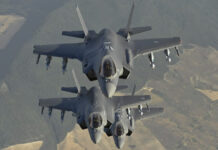In a third attempt in nine years to replace its current 50-year-old planes, the U.S. Air Force will release the Request for Proposal (RFP) for the USD$35 billion aerial tanker competition. The Air Force is hopeful both the Boeing Company and Northrop Grumman/EADS will bid for the work. The Northrop/ EADS team won the Air Force contract in the last competition, but following a Boeing protest, the government cancelled the contract. Northrop has said the team will not bid again unless changes are made to the draft RFP released in September. The RFP, scheduled for publication today, lists 372 requirements the bidders should address within 75 days. The Pentagon will announce its decision by September this year.
For EADS, competing for the KC-X is a strategic goal and one that it wasn’t ready to give up easily. On March 31, 2010 the Pentagon partly agreed to EADS’ request for extension, pushing back the bidding deadline by 60 days. At present the bids are due by July 9, 2010. The Air Force plans to flex its process expediting the bid evaluation process to ensure production of the tanker begins in early fall.
After failing to find a local prime for the KC-X bid, the European conglomerate decided to pit its U.S. subsidiary EADS North America to compete against Boeing in this bid. EADS is likely to submit a derivative of its Airbus 330 Multi-Role Tanker Transport aircraft, currently undergoing flight testing. Five customers have already selected the MRTT as their future tanker. Boeing is proposing the B767 NewGen tanker, that uses elements from other aircraft, such as the P8 and B777 that still has to be tested and refined through the development program.
Both competitors argue that the Air Forces’ orders will support and protect around 50,000 jobs across the USA, regardless of the origin of the aircraft itself. (EADS’s proposal is based on the Airbus airframe, designed by Airbus in Europe) Boeing support rely on Kansas, Iowa, Connecticut, Illinois, Maine, Missouri, Oregon and Utah while Northrop Grumman’s supporting states include Alabama, where it had planned to assemble its tankers, as well as its neighboring states of Georgia, Florida, Mississippi, and Louisiana. Support for a split buy of Boeing and Airbus tankers is also a possibility, although such a decision is claimed to most expensive to the taxpayer.
Responding to EADS’ decision to compete, and the Pentagon’s decision to revie its schedule to accommodate tem, Boeing officials stated their concern about “the ability of a heavily subsidized Airbus/EADS to accept levels of financial risk that a commercial company such as Boeing cannot. We regret that these concerns will not be addressed in the bid evaluation, even when the U.S. government has proven in a world court that those subsidies are illegal and directly distort competition between Airbus and Boeing.”
In general terms, the two platforms – Boeing 767 and Airbus 330 represent two different approaches to the mission, one aimed at lower cost per platform and higher versatility of the fleet while the other capitalizing on more economical use of the entire air refueling assets.
In the previous round the Air Force opted for the larger Airbus, that offered better economy over the program’s entire life cycle. Boeing argued its could offer larger aircraft but the Boeing 767 provided a lower cost platform that better conformed with the requirements set by the Air Force for the competition. Boeing said it could offer the 777 with similar capabilities to the A330 if this was the type of aircraft the Air Forces require.



















